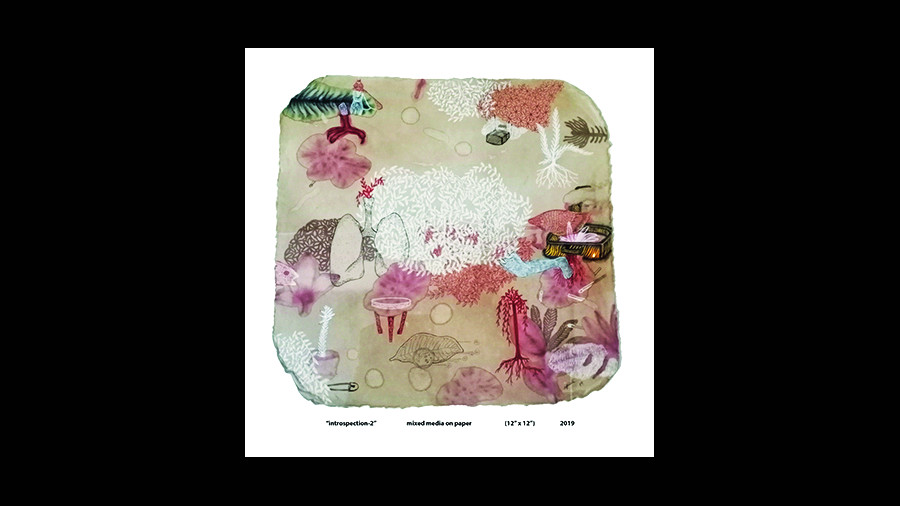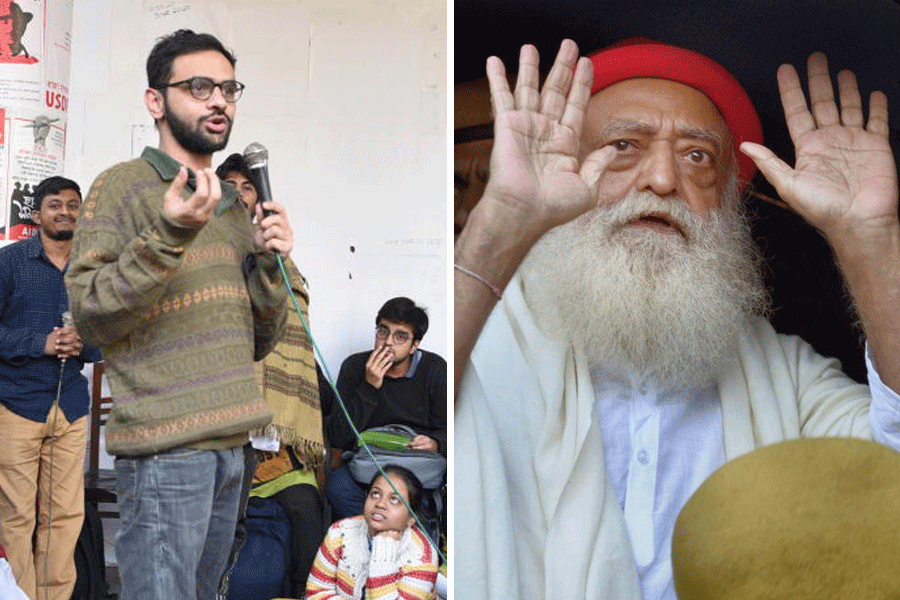Thirteen Ways of Looking at a Blackbird — Wallace Stevens’ poem was the title of the recent show Art Multi-disciplines held in its gallery after a year. Rejection of the singular perspective has, of course, been the standout singular trend in contemporary art. And yet, when experiences converge, expressions may share affinities.
For example, Rajarshi Biswas and Snehasish Maity seemed to address the paradox of aloneness: the individual, retrieved from the ensnaring clutter of his social milieu, can assert his individualism. But that throws him into a psychological vacuum when aloofness becomes isolation, underlined by confining figures in anonymous zones of dappled, seeping watercolour stains in neutral tones, the world obliterated. Biswas made them realistic, detailing their clothes and expressions and hinting at chores that carry social markers. Maity, though, turned them into spectral shells, almost blending into the vaporous ground. One striding figure may have referred to Gandhi and, perhaps, the power of one. With his back firmly turned, his isolation appeared courageous, fuelled by the spirit of ekla chalo. But the identity wasn’t articulated because the artist clearly wished to stress the Ambiguity of the Scenes he presented.
What Promiti Hossain and Rima Kundu share is a fragile, reflective, feminine sensibility. Introspection —which is what the former’s series was titled — aptly described the chance coalescence of visual fragments that float through one’s unbidden reminiscences, rife with suggestions but resistant to facile reading (picture). Combining etching with paint may be her way of grappling with the multiple layers and random juxtapositions that run through memory quite without logic.
In Kundu, however, logic wasn’t entirely absent when she invested domestic objects with a distinct vulnerability: a safety pin head and a knife blade were defensively sheathed in oven mitts while the fur-coated knife handle recalled Oppenheim’s cup and saucer. Hand-washing, integral to kitchen rituals, was imprinted on a spoon, making it a silent chronicler. Coming, finally, to Timir Brahma, what one noticed about his strident, poster clarity in images, was its mocking smirk.










